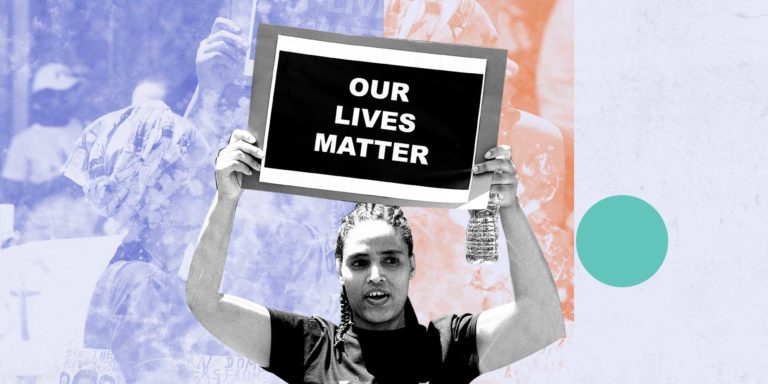This is the story of one of the fake accounts on Twitter, which is used to target and incite against Lebanese media and journalists who criticize Hezbollah.
Lea el-Azzi, a journalist working for the pro-Hezbollah Al-Mahatta platform, brought 26 tweets before the Internal Security Forces’ Cybercrime and Intellectual Property Rights Bureau (the Bureau) after being accused of managing the fake account. Others were punished by accusing them of agreeing to the content, retweeting, or mocking the story.
The Bureau, which is famous for persecuting journalists, heard a number of defendants. This happened after Azzi submitted a request to the Appeal Public Prosecution in Beirut, represented by judge Raja Hamoush, alleging the tweets entailed such crimes as defamation, slander, and inciting harm.
The complaint was made by journalist Hassan Alek, a colleague of Azzi. The latter was not satisfied with the charges against those who accused her of being behind the fake “Leroy, the stalker” account. She included tweets of people who agreed with the content or republished it.
The paradox is that journalists, who used to mock and humiliate the judiciary, now threaten tweeters by resorting to the judiciary to take revenge, addressing people with the logic of bullying, taking advantage of their relations with parties in power, in addition to their relations with the security services and the judiciary, which often leak records to them.
It shows an inability to tolerate criticism from people, who do not enjoy similar privileges, while taking advantage of relations that tend to favor them.
By following the fake account, interacting with it and with fans of its tweets, it appears that it has the support of journalists loyal to Hezbollah. They defend it and use it to incite. Some of them like posts that attack colleagues.
What is remarkable about the case, in addition to the high number of defendants, was the Bureau’s request to those who were summoned to come in to sign a written apology addressing Azzi.
Read Also:
In an interview with Daraj, journalist Maryam Majdoleen al-Lahham, a defendant in the case, said she had refused to sign, as she “refused to apologize in the absence of guilt, especially to those who operate on the principle of intimidation and deception.”
Al-Lahham was targeted by incitement campaigns on the alleged fake account, as well as accounts of media professionals, some of whom work for Hezbollah’s Al-Manar channel.
She reckoned that being summoned by the Internal Security Forces was part of the campaign against her, which stemmed from what she calls: “the resistance press.” She considered them to be the main instigators behind launching a label accusing her of employment and “Daashnah.”
In an attempt to put more pressure on the tweeters, Al-Azzi also demanded, according to one defendant, a compensation of one billion Lebanese pounds, the removal of the tweets, and a fine of 10 million Lebanese pounds for every day that did not happen. However, a legal source told Daraj that the public prosecutor does not decide anything regarding financial compensation. It only conducts investigations and files charges. As for the fine the plaintiff demands, such a request is usually submitted before the summary court not the criminal court.
The source perceived the request for a fine and compensation as “a sign of confusion,” while a demand for large compensation at a time when the plaintiff was satisfied with paying a nominal fee much less than the one paid to the prosecution before the hasty court.”
Although any journalist has the right to charge those who lie or defame him, or her, the number of defendants and the nature of their tweets and interactions, show a repressive intention on the plaintiff’s part or, rather, the parties behind her. It also appears in Azzi’s comments on the tweets and threats, that the complaint is an attempt to “discipline” those who dare to harm her and her fellow tweeters.
For example, one of the defendants was a young woman who quickly removed her tweets after being threatened with prosecution. However, this did not prevent Azzi from claiming her and summoning her to the Bureau, which then usually asks for the tweet to be removed. Another tweeter said he was only called because he liked a post. Noting that the plaintiffs did not spare a journalist or public figure from defamation and slander, and this is their right. But they do not accept the same behavior from their critics.
The Twitter Arena
Technically, according to digital security expert Layal Jubran, it is difficult to identify fake account holders, especially those who have the technical expertise allowing them to take precautions.
Some accounts can be identified by sending links to click on, which would allow for identifying the Internet Protocol (IP), the source providing the Internet service and, finally, the account holder.
In the case of a Virtual Private Network (VPN), the geographical location of the operator and therefore his identity can never be determined. Jubran speculated that the operator of the fake account may have removed it to erase any trace or because he feared he had clicked on a link that allowed his address to be determined.
It seems it is currently not possible to mitigate the danger of the fake accounts behind which Hezbollah lurks, using them to incite against opponents. Some of its media and members are even no longer ashamed of inciting and launching accusations of treachery and threats from their personal accounts.
Among the most famous of them is one of the party’s fighters who got injured in Syria, whose photos show his close relationship with Jawad Nasrallah, son of Hezbollah Secretary-General Hassan Nasrallah.
What happened to university professor Basil Saleh proves the seriousness of the campaigns launched by such accounts. The “stalker” account started a campaign of incitement against Saleh after he tweeted a photo of a Hezbollah fighter with fear in his eyes.
The campaign included death threats by fake and real accounts, which mentioned his work address, his family’s residence and other personal information.
Fake accounts are like an unofficial arm of campaigns linked to Hezbollah. These are accounts that omit a name or clear identity, but work in a way that seems coordinated in terms of a unified message and the target. This is shown by a clear correlation between these fake accounts and accounts of media and public figures retweeting what the fake accounts claim. These fake accounts are focused on incitement, threats and the targeting of certain parties and people, especially those who criticize or expose party practices and allied political parties.
This form of incitement may lead to physical threats similar to what happened to writer Lokman Selim before his assassination in 2021 in south Lebanon. Prior to elections, candidates opposed to the Amal-Hezbollah electoral lists are subjected to such campaigns. Especially through Twitter candidates in the south are bullied and threatened. Some even called for a boycott of cafes or places that host seminars. Twitter’s regulations differ from those of, for example, Facebook.
They allow electronic armies, such as those affiliated with Hezbollah, to wage battles and carry out campaigns. This has made it an arena of daily confrontation, which will likely intensify with an eye on the parliamentary elections on May 15. It cannot be denied that the Lebanese parties, through their own campaigns and those of the security services, have succeeded in reducing the space for virtual dialogue having already eliminated the space for dialogue on the ground.
Read Also:







